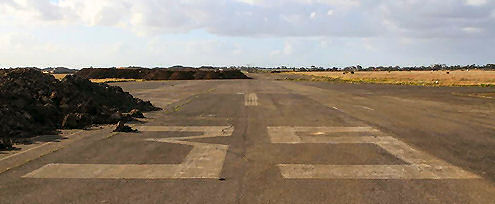|
|
||
|
||
|
Privacy Policy | Editorial Policy | Profit Policy | Join the Association | List of Members | Contact us | Index | Links |
||
|
Back Go to page: 1 2 3 4 5 6 7 8 9 10 11 12 13 14 15 16 17 18 19 20 Forward
|
||
|
|
||
|
Pensions.
The following email is doing the rounds, supposedly from someone called John Glover
“We sat in the sun at Coffs Harbour CBD mall last Thursday having a
coffee before browsing the now weekly fresh food growers market. The
number of well dressed African couples with children were enjoying the
same atmosphere. I needed to walk over to the Palm Centre chemist to get
Shirley one of her prescriptions. I stood 3rd in one line of a four
After the attendant asked for evidence of why and the man pulled out two reasons, the first was his families Australia Residency Card, the second was his personal Federal Government Pensioner card. The attendant took both back to the owner/chemist, I stood there watching the chemist make a call. A few minutes later the attendant returned and told the man the cost was reduced to $9.40, his response was "but we don't pay", to which the attendant said but this prescription is not made out to you, it's made out to your wife.
The man then went into a "but she not speak with you". By now myself and
others behind me were getting impatient. Then the man pulled out his
MasterCard and paid the $9.40 for what would have cost this wood duck
$32.20 had it been mine. This man was early 30's, 6' tall, well dressed
in a suit - yet he had an Australia Pension Card that neither myself or
Shirley will ever qualify for. Whilst Australia may one day gain from
the guy's adult aged
John Glover then includes a copy of a letter sent to a supposed Robert Bretton, from the Australian Government, showing that Refugees living in Australia receive allowances equal to $56,680 per year, when the poor old Pensioner only receives $16,068 per year.
If you believe it, you’ll believe anything, IT’S ALL CRAP!!!
These rubbish emails pop up regularly and anyone with just a tiny amount of effort can Google Illegal Immigrants Pensions and find notices from The Australian Government, the Refugee Council of Australia and even Hoax Slayer debunking the whole thing but still people send it on as if it’s genuine.
Don’t be suckered in, a refugee who has permanent residency in Australia receives exactly the same social security benefit as any Australian-born person in the same circumstances. Refugees apply for social security through Centrelink like everyone else and are assessed for the different payment options in the same way as everyone else. There are no separate Centrelink allowances that one can receive simply by virtue of being a refugee, nor do refugees receive cash payments under either the Integrated Humanitarian Settlement Strategy (IHSS) or the Settlement Grants Program.
If you receive one of these hoax emails, junk it and inform the person who forwarded the email that it’s all garbage.
|
||
|
Another look at RAAF Williams – Laverton.
Sadly, now just a shell of its former self, RAAF Williams-Laverton has significant heritage values for its role in the assemblage, testing and maintenance of RAAF aircraft from its inception in 1924 until the present.
The RAAF base at Laverton was set up to maintain and repair aircraft and keep them airworthy. Virtually every aircraft accepted into the RAAF from the original Imperial gift at the end of WWI, arrived in Australia in the form of component parts, which were transferred to Laverton for construction. Having been built there, these aircraft were almost always test-flown from Laverton. During WWII the role of the base in supplying aircraft for Australian airmen was fundamental to the war effort of the RAAF. Virtually every type of aircraft in service during World War II was serviced at Laverton, including the first Spitfires to arrive in Australia.
|
||
|
|
||
|
After the war, Laverton continued to be important as a testing ground for new aircraft. The first jet aircraft to be flown in Australia was tested at Laverton. Laverton was also the site of the test flight of the Vampire A78-1 and first Australian-built jet aircraft. The first helicopter to enter Australian service was assembled and flown at Laverton in January 1949.
The first aircraft hangars at Laverton were constructed in 1926-1928 for the No. 1 Aircraft Depot (No.1 AD) with further expansion carried out when 21 Squadron moved to the base in 1936. The depot went on to play an important part of supporting Australia’s involvement in World War II, with thousands of aircraft assembled and tested at Laverton, while many others were repaired or modified following mechanical failure or damage sustained in battle.
|
||
|
|
||
|
Reflecting its role in the construction and maintenance of these aircraft, it retains its No.1 AD Headquarters and administration complex built in the 1930s together with workshops and hangars built during the 1920s and 30s, and its complex of three 1930's workshops and hangars next to the tarmac
Early in the 20th century Britain realised the importance of aviation to its defence needs and expanded the existing Balloon Section of its Royal Engineers into an Air Battalion. Later that year the formation of a 'corps of aviators' and the establishment of 'a school of practical navigation' were recommended. The result of this was the formation in April 1912 of the Royal Flying Corps (RFC). The Royal Flying Corps comprised both naval and military wings and a Central Flying School. The logistical and other arrangements employed at the Central Flying School and other British air bases were to be influential in the later development of Australian military aviation bases.
In 1909 the Australian Government gave recognition to the potential of military aviation by offering £5,000 to the inventor or designer of an aeroplane suitable for military flying. Although none of the forty entries were judged good enough for use in a wartime situation, the competition attracted a high degree of interest in the military application of 'flying machines', and the Government was lobbied for the formation of a flying corps. By the beginning of 1912 the Army had proceeded with its plans for a flying school, having advertised in December 1911 for the appointment of two competent mechanics and aviators. The Government publicly announced the formation of the Central Flying School and Aviation Corps (commonly referred to as the Australian Flying Corps, or AFC) on 7 March 1913. The original plan was for the Australian Central Flying School to be located in the nation's new capital, Canberra, but after surveying the Canberra site, it was rejected on the grounds that it was too high, the area too isolated, and the surrounding hills too dangerous for safe flying.
Subsequent investigations showed that the Western District of Victoria
was much more suitable for the establishment of the new flying school,
with the best sites being at the Werribee Plains and at Altona Bay.
Eventually, some 734 acres of grazing land was
Despite the recent date of the AFC's establishment and that of the Central Flying School, many Australian pilots trained at Point Cook during World War I and saw air action during the conflict. In November 1914 a request came from the Indian Government for aerial assistance in a planned campaign in Turkish-occupied Mesopotamia (now Iraq). In response, the Australian Government despatched four officers and 41 other ranks, who officially served as flying officers in the British Royal Flying Corps. Australian military aviators saw their first action in one of the more disastrous campaigns of World War I. They were ill-equipped for the conditions in the Middle East and many fell prey to disease, particularly malaria. George P Merz, one of the first four pilots to graduate from Point Cook, was killed during the Mesopotamian campaign - the first Australian airman to die in battle.
Though many Australian pilots in this and other campaigns served directly as officers of the British Royal Flying Corps, others actually flew under the auspices of the Australian Flying Corps. At the end of 1915 the British Army Council in London made the suggestion that the Australian Government might prefer to raise complete squadrons which would serve with the British forces but under the name of the 'Australian Flying Corps' (AFC). The Australian Government agreed and by 1916 the AFC had expanded to four front-line squadrons. By the end of 1917 the AFC had also established a training wing of four squadrons based in Gloucester, England. It is believed that 460 officers and 2,234 other ranks served with the AFC and another 200 pilots and observers flew with other services (mainly the RFC) during the 1914-18 War. Australia was unique in that it was able to maintain a distinct identity through the establishment of the AFC squadrons and even though they were often given RFC designations, their identity as Australian squadrons was retained. This proved to be significant in enabling Australia to move toward the establishment of a regular air force in the years following the cessation of hostilities.
|
||
|
|
||
|
Other flight and flight training facilities were established elsewhere in Australia during World War I. In 1916 the New South Wales Government announced its intention to establish a State Aviation School at Richmond outside Sydney. The school was originally placed under the control of the New South Wales Department of Works, but was later transferred to the New South Wales Department of Education. The courses at Richmond were modelled on those begun at Point Cook, however, most of the Richmond trained pilots who flew in World War I did not serve with the AFC, but enlisted directly with the British RFC.
In April 1918 both the Army and Navy wings of the British Flying
Services - known respectively as the Royal Flying Corps and the Royal
Naval Air Service - were amalgamated to form an independent flying
service - the Royal Air Force. Not long afterwards moves began in
Australia to effect similar changes to its fledgling air service. The
prime mover
The Australian Air Force was officially inaugurated on 31 March 1921 and approval to use the ‘Royal’ prefix was granted on 13 August 1921. Under the initial scheme for the Air Force, there were to be seven squadrons. The first four of these were to be located at Point Cook, with two squadrons at Richmond in New South Wales and a seaplane unit based at a site on Sydney Harbour however, the battle to increase the strength of the RAAF through the 1920s and 1930s was a continual one. Overall defence spending continued to be low through the 1920s, and the RAAF still had to compete with the two longer established services, the Army and the Navy, both of which received much higher levels of funding support from the Defence Department up until the outbreak of World War 11. To mid-1924 the flying personnel in the RAAF only consisted of about 50 officers and 300 other ranks yet dspite this, the 1920s saw the expansion of the RAAF, which established two new bases at Laverton and at Richmond, and also invested considerable capital on the expansion of existing facilities at Point Cook.
At the end of World War I, Australia received a gift of aircraft equipment from the British Government which consisted of 128 aeroplanes of varied descriptions, together with mechanical transport, engines, stores, workshop machinery, tools and spare parts – all valued at £1,000,000 ($2,000,000). Following arrival in Victoria this equipment was stored in various locations under less than satisfactory circumstances. By 1921 stores sections operated at both Spotswood and North Fitzroy. At Spotswood, for example, equipment was stored in wheat-sheds rented from the Victorian Railways, while at North Fitzroy vacant brewery buildings housed the motor repair section. This was the nucleus of No. 1 Aircraft Depot (1 AD), which was formally created as a unit based at Point Cook on 1 July 1921 but by 1922 it was clear that considerable provision needed to be made for 1 AD in the form of an entire depot complex.
Although Point Cook was initially favoured as the permanent site of 1 AD there were a number of disadvantages, not the least of which was the estimated £45 000 ($90,000) cost of building a railway spur to the site. Additionally, it was felt that the proximity of Point Cook to Port Phillip Bay and the consequent salt air, would cause machinery to deteriorate. The Commonwealth Parliamentary Committee investigating possible options eventually settled on Laverton, which was already on both the main Melbourne to Geelong railway and road and already had telephone, water, light and power mains running through it. As a result, a detailed plan for the establishment of the new depot at Laverton was prepared under Chief Architect John Smith Murdoch by the Commonwealth Department of Works and Railways. This department was responsible for the design of buildings at all Defence Department establishments, which accounts for the similarity of certain building types at different air, naval and military bases constructed during this period.
The proposal at Laverton was to construct the complex of buildings over a period of four years. The complex was to comprise stores, workshops, hangars, and living quarters for officers and men, as well as landing grounds for machines. Buildings which were to house the working functions of the depot (the storage buildings, workshops, salvage store, boiler room, etc, and the hangars) were all designed of brick, while buildings for the accommodation and recreation of the residents were all designed in timber. By November 1924 a start had been made on the construction of a special railway siding adjacent to the site, preparatory to transporting materials and equipment on site. By the following January work had commenced on the construction of the first buildings, and within a year at least some of the buildings were available for occupation. It was not until 1 March 1926, however, that the official relocation of 1 AD from Point Cook to Laverton took place.
|
||
|
|
||
|
As originally planned and constructed, the depot at Laverton was arranged in a formal manner, and was laid out in four basic areas. These were: the storage and workshop buildings; the No.1 Aircraft Depot barracks and mess facilities; officer’s quarters; and finally, the hangars, temporary huts and mess facilities of the Service Squadron which was to be based at Laverton alongside 1 AD. The workshop and store buildings were located along the Melbourne-Geelong railway line, to which they were connected by a moveable crane. The depot barracks and mess facilities were located some distance to the east of these. The officer’s quarters and the Service Squadron hangars, huts, and mess were strung out to the north of these, along the east side of Tangmere Road. To the north again was the intersection of the Melbourne to Geelong road and the Point Cook Road.
The main role of the RAAF establishment at Laverton was as a stores depot. Virtually every aircraft accepted into the RAAF after 1926 arrived in Australia in the form of component parts, which were transported to Laverton for assembly. The range of aircraft built at Laverton from imported parts in this manner included Wapitis, Bulldogs, Demons and Avro Ansons and they were almost always test-flown from Laverton.
Within a matter of years Laverton's sole purpose as a stores depot changed dramatically with the transfer of 1 Squadron from Point Cook to Laverton in 1928, it was however, to be a further eight years before Laverton assumed the status of a station with a separate headquarters, following the formation of 21 Squadron in 1936.
|
||
|
|
||
|
More significant for the Air Force was its involvement in the survey of air routes in isolated areas of the nation. The Air Force was involved in the survey of strategic air routes around Australia, and the identification of suitable landing-places along them. RAAF work on possible mail routes was part of a general expectation on the part of the Australian Government that the Air Force would assist in the achievement of its civil aviation objectives. The Government's attitude was that it was important to maintain, encourage and assist in the development of civil aviation, since the nation was not in the economic position of being able to maintain a large air service in peacetime. This attitude was manifested by the formation in 1920 of a Civil Aviation Branch within the Defence Department. In the late 1920s, Laverton operated outside its original function when, along with Point Cook and Richmond, it became involved in a number of RAAF exercises which were designed to provide assistance to the Australian Government in a number of its exploration initiatives. Two major areas of the RAAFs civil work were in survey undertakings, many of which were in previously unsurveyed areas of central and northern Australia, and in meteorological flights for weather forecasting.
Laverton was also the starting point for some of the RAAF's more
impressive 'epic' flights. One of the best-known took place in February
1938, when Richard Williams was delegated to represent Australia at the
opening of the newly completed floating dock at the British
Concurrent with the expansion of the range of RAAF activities based at
Laverton, was a large increase in personnel stationed there and by July
1935 the number of personnel at Laverton had increased significantly. By
this time the training facilities at the base had been increased to the
stage where, in addition to drill training for recruits, trade training
for Aero Fitters, Metal Riggers, Armour Fitters and W/T Operators was
commenced. The influx of new recruits resulted in March 1935 in the
discontinuation of the system of posting newly
In addition to Point Cook and Laverton, RAAF bases were established elsewhere around the country in the lead up to World War II: Richmond, New South Wales (1923); Pearce, Western Australia (1934); Darwin, Northern Territory; with Archerfield, Queensland; and Rathmines, New South Wales (1939) and during this period nine Permanent Air Force Squadrons: No’s 2, 3, 4, 5, 8, 10, 11, 12, and 14, and four Citizen’s Air Force Squadrons: No’s 21, 22, 23 and 25 were either raised or re-raised, however, in most cases they were under strength and the RAAF was ill prepared for war when it was declared in 1939.
On the eve of World War II the following air units were stationed at Laverton: No.1 (Bomber) Squadron; No.2 (General Reconnaissance) Squadron; No.21 (General Purpose) Squadron; and one flight of No.12 (General Purpose) Squadron.
Following the outbreak of hostilities the Allies realised that air strike capacity would be of paramount importance in the War. Britain quickly instituted the Empire Air Training Scheme (EATS), whereby Australia, New Zealand, and Canada (and later Southern Rhodesia) would supply trained aircrew for Britain. With the implementation of EATS, Point Cook's Central Flying School lost its singular centralised training role. As a result, a scheme was devised whereby twenty 'Elementary and Service Flying Training Schools' as well as other training units and schools for Air Observers, Wireless Air Gunners, and in Bombing and Air Navigation were established throughout Australia. These schools were accommodated in prefabricated buildings, which were in the main constructed at Laverton and transported to their destinations where they were then reassembled.
|
||
|
|
||
|
In addition, the Air Performance Unit, which had been formed at Point Cook to work in the area of research and development, was transferred to Laverton where it became known as Aircraft Research and Development Unit (ARDU).
During World War II Laverton was greatly expanded and the Base's population was at its peak. The first 34 Australians graduated from RAAF Service Flying Training Schools on 18 November 1940, with a further 37 000 aircrew eventually trained in Australia. To meet this commitment, the RAAF established 2 Air Navigation Schools, 3 Air Observers Schools, 3 Bombing and Gunnery Schools, 12 Elementary Flying Training Schools, 6 Initial Flying Training Schools and 8 Service Flying Training Schools. In addition, 7 Schools of Technical Training and other specialised technical schools were established to train ground crews in the maintenance of aircraft and equipment.
The duration of World War II saw 15,746 RAAF pilots, navigators, wireless operators, gunners and engineers sent to British squadrons and 11,641 to Australian squadrons. When the armistice with Japan was signed on 15 August 1945, the RAAF had a total of 131,622 men and women working in 570 Units around the globe, maintaining 5,620 flying aircraft. The list of aircraft was divided equally into front-line and support machines which included Liberators, Mosquitoes, Mustangs, Dakotas, Catalinas, Beaufighters, Kittyhawks and Spitfires – war had transformed the RAAF into an immensely powerful force.
|
||
|
|
||
|
In addition to its execution of numerous air operations, the RAAF had also pioneered the development and operation of radar and operated its own shipping in the South West Pacific Area. The RAAF had grown to be the world's fourth largest air force.
Virtually every type of aircraft in service during World War II was
serviced at Laverton. These aircraft ranged from small training aircraft
to multi-engine bombers and among the more dramatic efforts at Laverton
during the war was Operation 'Capotan'. This operation
On the civil aviation front, Trans-Australia Airways (TAA) commenced its first commercial operations at Laverton in September 1946 and continued to operate out of the RAAF base until Essendon Airport was completed.
The training operations which had begun at Laverton just before the outbreak of World War II also continued after the end of the war. Many thousands of RAAF personnel have been trained at Laverton since then, including: all Radio and Communications personnel; medical orderlies; WRAAF members; all 21 Squadron National Service reservists; Air Training Corps; Musicians; and Publication Assistants. Laverton was also responsible for the administration and control of the Tocumwal base in the post-war period, which was used for the disposal of obsolete aircraft.
Laverton also continued to play an important part in RAAF official
ceremonial activities in the post-war period, and in this it was
arguably more important than Point Cook. In September
After the war the airfield continued to be a testing ground for new aircraft, remaining in this role until Avalon Airport began to take over in the early 1960s. Flight operations officially ceased at Laverton in September 1996, with the last aircraft departing in February 1998: a de Havilland Vampire jet from the RAAF museum fleet. On closure RAAF Williams was divided into two: the eastern side remained a military base, while the empty airfield was sold to a private developer for housing.
As for the aircraft hangars, in 2009 they were retained by the RAAF and added to the Commonwealth Heritage List as a Listed Place.
The west workshops, (below) include a large collection of buildings once used by 1 AD. Most noticeable in this block is a pair of large brick hangars, but three prefabricated metal hangars also occupy the precinct, along with a half-dozen brick warehouses and smaller office blocks.
|
||
|
|
||
|
As for the once busy runways themselves, today a little over half remains, the southern portion of runway 35, the eastern leg of runway 23, and the northern stub of runway 17. No long stretches of pavement remain – the runways having been used as a dumping ground for spoil or dug up during the laying of pipes – so no testing your car on the 1/4 mile.
|
||
|
|
||
|
|
||
|
Progress?? |
||
|
|
||
|
|
||
|
|
||
|
|
||
|
|
||
|
Back Go to page: 1 2 3 4 5 6 7 8 9 10 11 12 13 14 15 16 17 18 19 20 Forward |
||
|
|

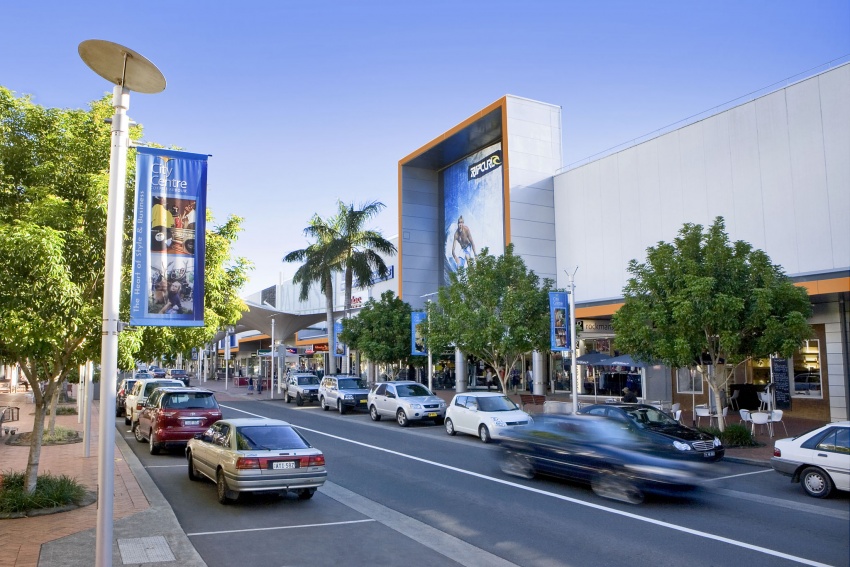 abreast line with others waiting to be served, it was truly a spot the
Aussie group, just me and two others. When the well dressed tall African
man in front of me handed over his prescription it was promptly filled.
The shop assistant advised the man that it cost $32.20. He looked at her
in surprise and said "but we don't pay".
abreast line with others waiting to be served, it was truly a spot the
Aussie group, just me and two others. When the well dressed tall African
man in front of me handed over his prescription it was promptly filled.
The shop assistant advised the man that it cost $32.20. He looked at her
in surprise and said "but we don't pay".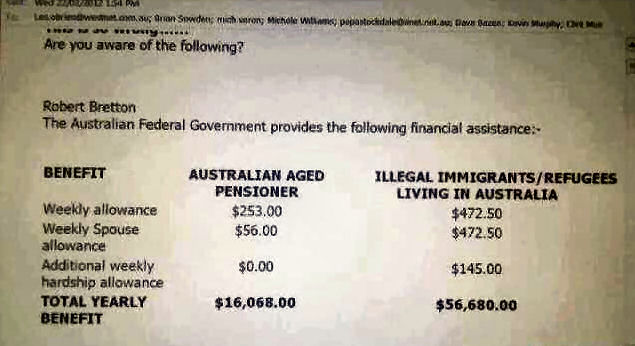 children, they too will cost all tax payers on top of their parents
until they finish school, are funded through university, and maybe one
day get a tax paying job. The above is a real life and true account of a
single event that unfolded on just one sunny Thursday in my home town.”
children, they too will cost all tax payers on top of their parents
until they finish school, are funded through university, and maybe one
day get a tax paying job. The above is a real life and true account of a
single event that unfolded on just one sunny Thursday in my home town.”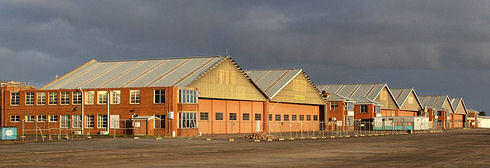
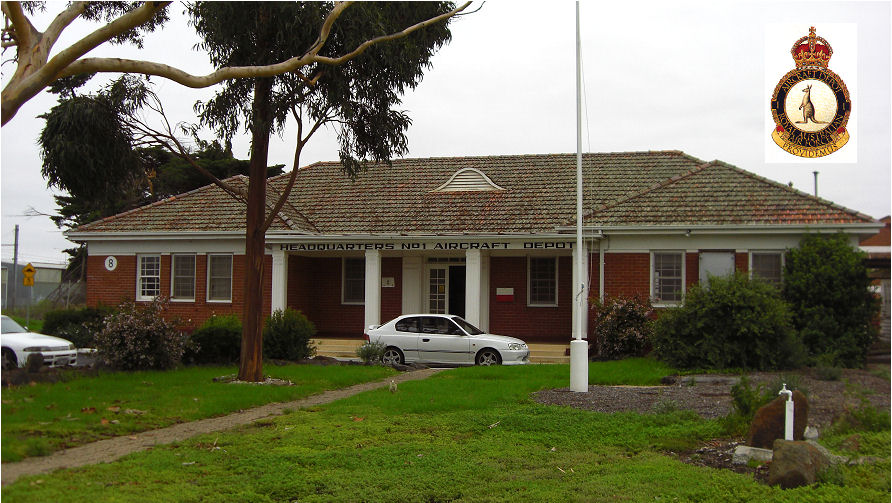
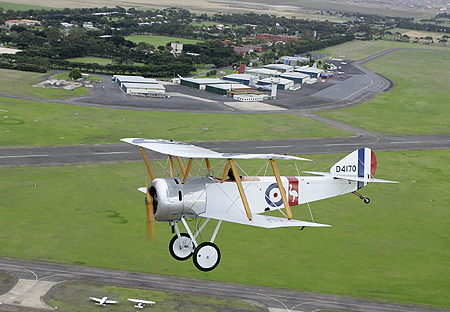 purchased at Point Cook near Werribee at a cost of about £6,000
($12,000). The purchase of the land was finalised on 13 December 1913
and the first training course at Point Cook began in August 1914.
purchased at Point Cook near Werribee at a cost of about £6,000
($12,000). The purchase of the land was finalised on 13 December 1913
and the first training course at Point Cook began in August 1914.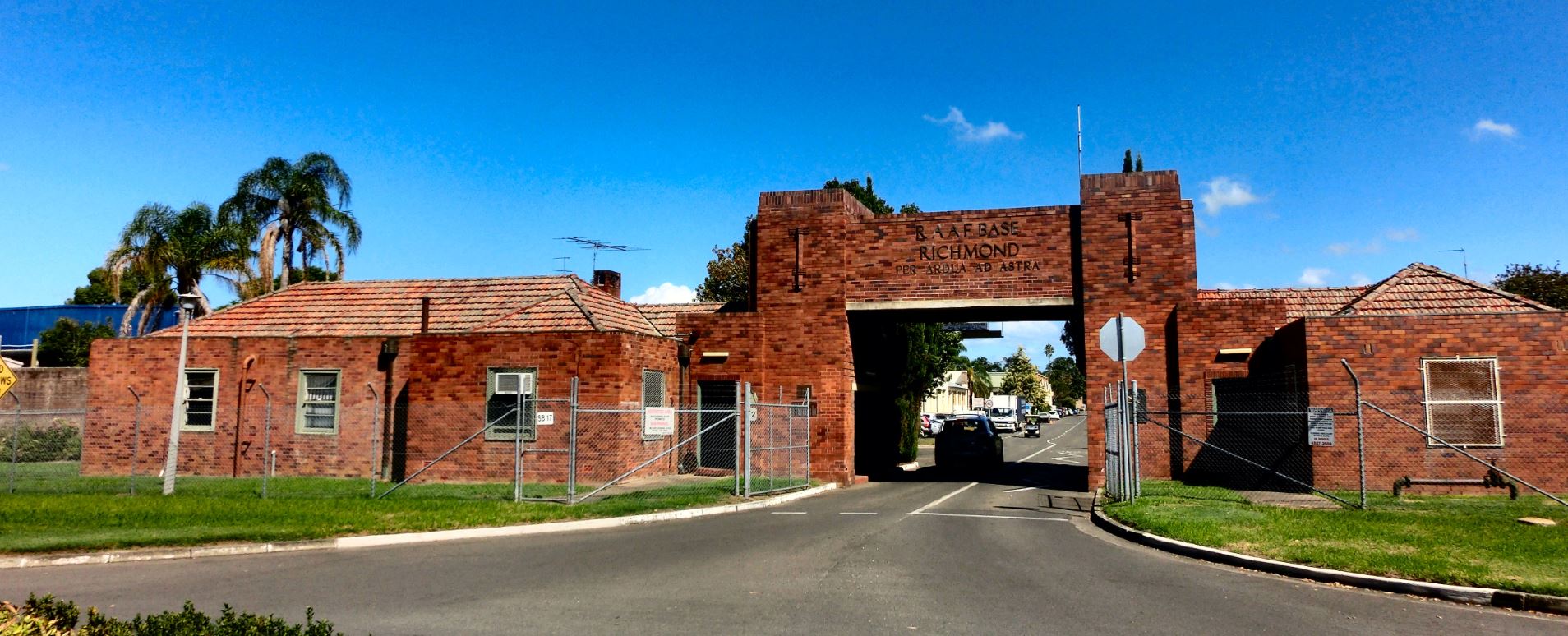
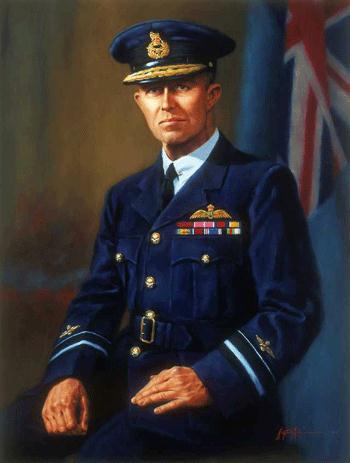 behind the efforts in the immediate post-war period towards the
establishment of a single Australian air force is generally considered
to have been Lieutenant-Colonel (later Air Vice-Marshal, Sir) Richard
Williams. Williams had commanded No. 1 Squadron AFC during the war and
was then promoted to the rank of Lieutenant-Colonel in June 1918 and
given the command of the 40th wing of the British Royal Air Force.
behind the efforts in the immediate post-war period towards the
establishment of a single Australian air force is generally considered
to have been Lieutenant-Colonel (later Air Vice-Marshal, Sir) Richard
Williams. Williams had commanded No. 1 Squadron AFC during the war and
was then promoted to the rank of Lieutenant-Colonel in June 1918 and
given the command of the 40th wing of the British Royal Air Force. 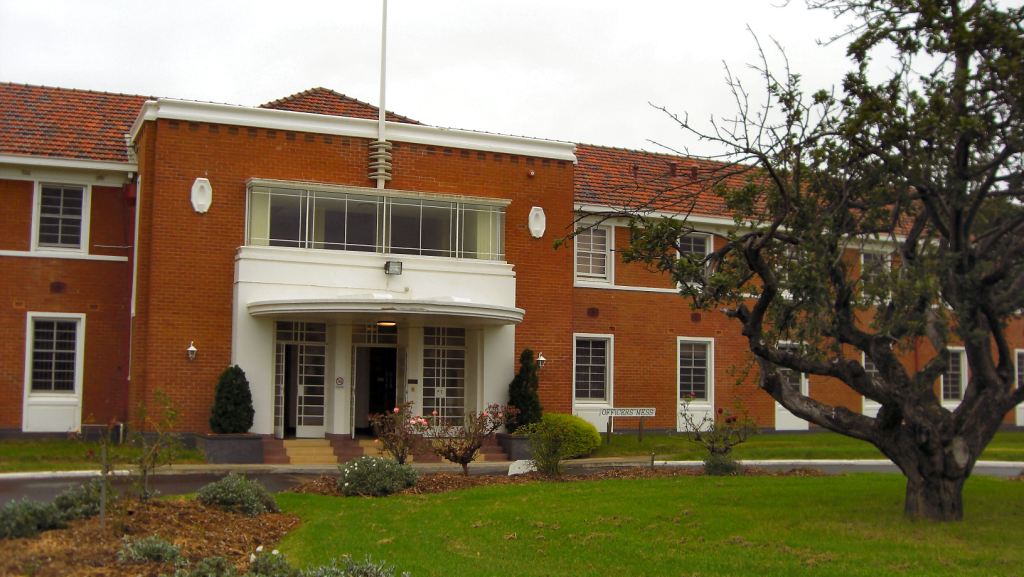
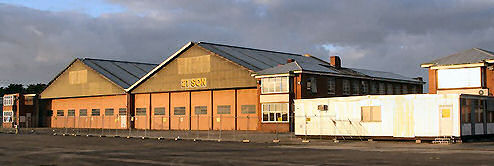
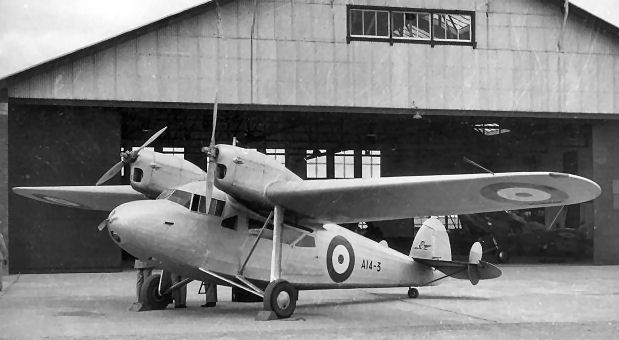 naval base in Singapore. The civil air service to Singapore at this time
ran only once a week, and so Williams was forced to make the return trip
in a service aircraft. The trip acquired more significance than it would
otherwise have had because of the choice of aircraft in which Williams
chose to make the journey - a twin engine monoplane, the Australian
designed Wackett Gannet. This meant that the trip represented the first
time an aircraft designed and built in Australia (by the Commonwealth
Aircraft Corporation) had completed an international flight.
naval base in Singapore. The civil air service to Singapore at this time
ran only once a week, and so Williams was forced to make the return trip
in a service aircraft. The trip acquired more significance than it would
otherwise have had because of the choice of aircraft in which Williams
chose to make the journey - a twin engine monoplane, the Australian
designed Wackett Gannet. This meant that the trip represented the first
time an aircraft designed and built in Australia (by the Commonwealth
Aircraft Corporation) had completed an international flight.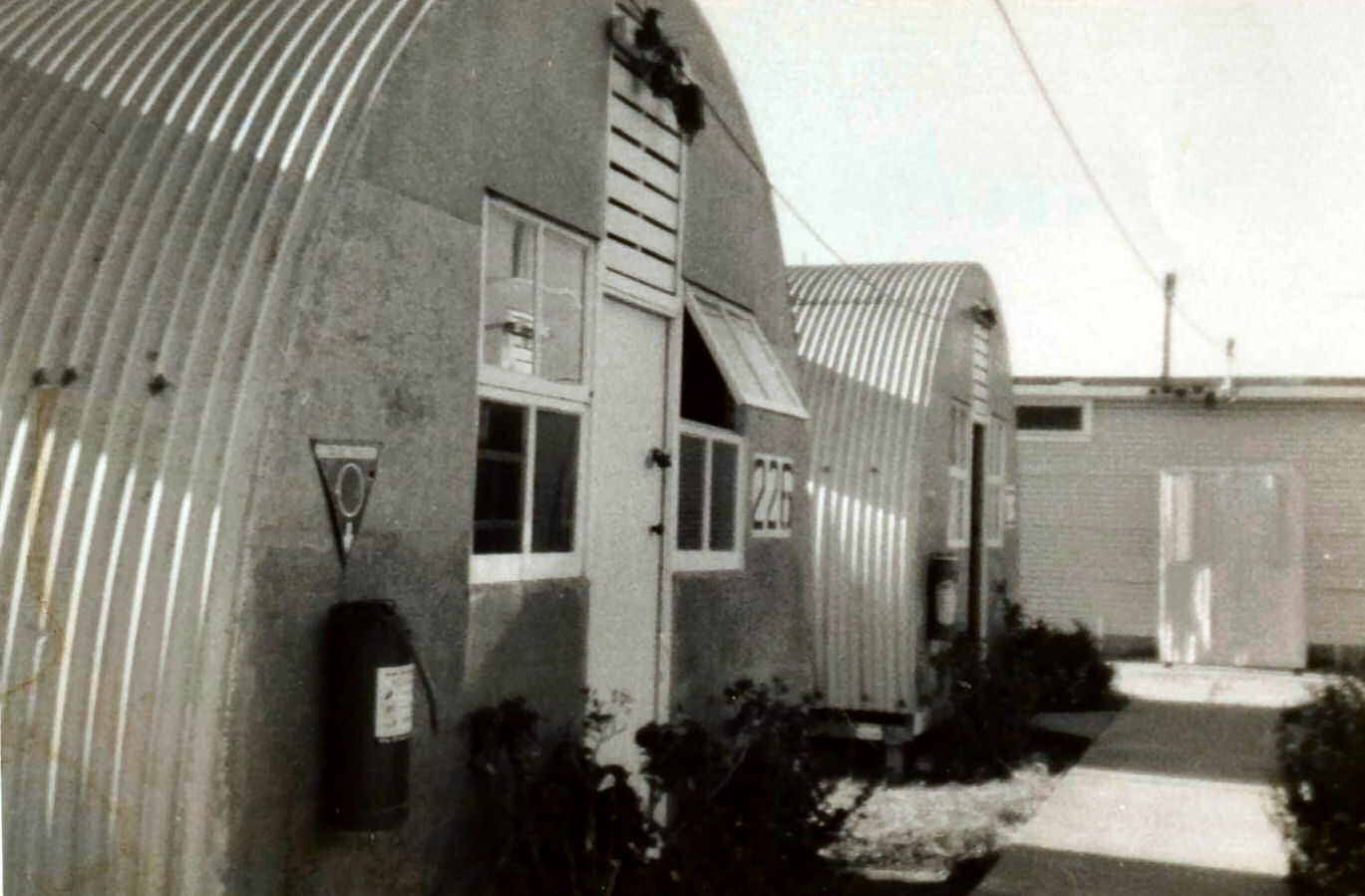 enlisted airmen direct to units for training. A Recruit Training Section
was formed as part of 1 AD, and on 1 September 1936 this section became
Recruit Training Squadron. The presence of this training depot at
Laverton, in addition to the base's role in receiving and testing
aircraft delivered to the Air Force, made the Base the logical point at
which to initiate new flying units. Major capital works expenditure at
Laverton, Point Cook and Richmond during the mid to late 1930s reflected
the Australian Government's commitment to the expansion of Air Force
facilities in this period and its focus on air power as being crucial to
the Allied cause in the impending military conflict.
enlisted airmen direct to units for training. A Recruit Training Section
was formed as part of 1 AD, and on 1 September 1936 this section became
Recruit Training Squadron. The presence of this training depot at
Laverton, in addition to the base's role in receiving and testing
aircraft delivered to the Air Force, made the Base the logical point at
which to initiate new flying units. Major capital works expenditure at
Laverton, Point Cook and Richmond during the mid to late 1930s reflected
the Australian Government's commitment to the expansion of Air Force
facilities in this period and its focus on air power as being crucial to
the Allied cause in the impending military conflict.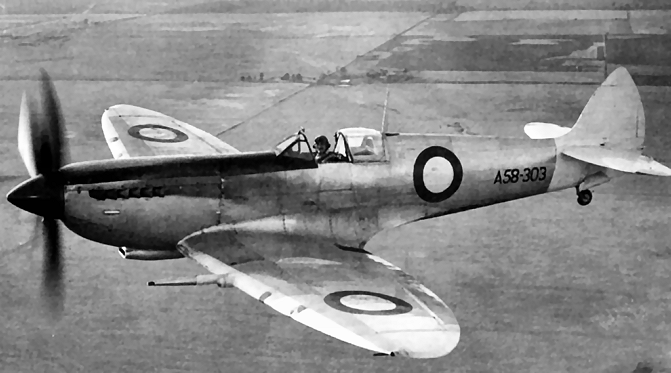 saw the components of the first Spitfires to arrive in Australia rushed
from the Melbourne docks and assembled and test flown at Laverton, from
where they were issued to RAAF and RAF Squadrons for operational
deployment in the north of Australia.
saw the components of the first Spitfires to arrive in Australia rushed
from the Melbourne docks and assembled and test flown at Laverton, from
where they were issued to RAAF and RAF Squadrons for operational
deployment in the north of Australia.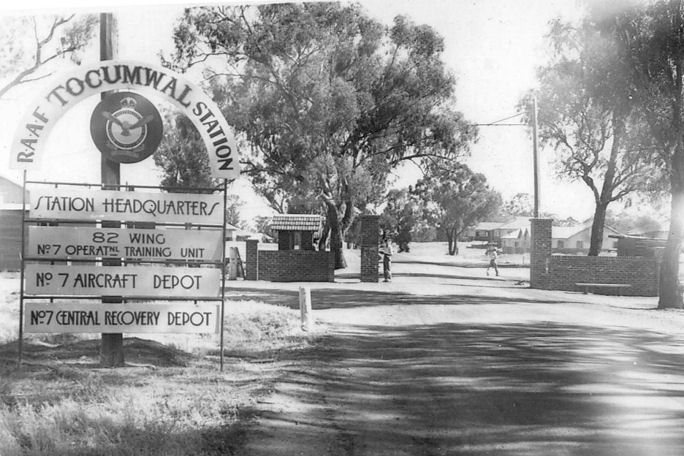 1952 the first RAAF colours were presented at Laverton and in 1954 Her
Majesty Queen Elizabeth II visited the base as part of her first tour of
the Commonwealth.
1952 the first RAAF colours were presented at Laverton and in 1954 Her
Majesty Queen Elizabeth II visited the base as part of her first tour of
the Commonwealth.

